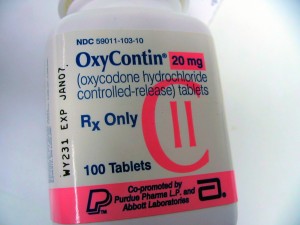There are growing signs around the country that the abuse of OxyContin is diminishing. The drug is being bypassed during pharmacy robberies in favor of Opana, methadone and other narcotic drugs, and some hospital emergency rooms are reporting a decrease in OxyContin overdoses.

According to Forbes, the Journal of Pain and other publications, the introduction of a new tamper-resistant form of OxyContin in 2010 seems to be responsible for a decrease in abuse of the drug. Drug addicts previously crushed OxyContin pills to circumvent the drugs time-release mechanism and experience the full impact of the drug in one rush. Instead of allowing drug abusers to crush the pill for snorting or injection, the new OxyContin turns into a gummy mush when tampered with.
Unfortunately, the reformulation of OxyContin does not appear to be leading to an overall drop in drug abuse. In the past decade, OxyContin became so popular as a drug of abuse in rural communities that it was nicknamed “hillbilly heroin.” This nickname has unfortunately proved to be somewhat prophetic since many former OxyContin users are now turning to heroin to achieve a similar high. According to Dr. Gregory Davis, a professor of pathology and coroner in Birmingham, Alabama, the city has recently seen a rise in heroin overdoses from one or two per year to one or two per week.
A study recently published in the New England Journal of Medicine shows the shift away from OxyContin abuse. In 2009, about 36 percent of patients at drug treatment centers reported that their primary drug of abuse was OxyContin. In 2012, following introduction of the new form of OxyContin, about 13 percent said it was their primary drug. More than 30 percent of the patients said their drug of abuse was another opioid such as fentanyl or hydromorphone. The study involved more than 2,500 patients at 150 treatment centers in 39 states. Especially troubling is that fact that 20 percent of patients reported using heroin in the past 30 days.
One of the patients involved in the study said that heroin is becoming more popular because it is cheaper, more readily available and easier to use than prescription opioids. According to Theodore Cicero, professor of psychiatry at Washington University and co-author of the study, the upsurge in heroin use could be even more dangerous than prescription drug abuse. Addicts don’t know for sure the strength of a heroin dose and they must use it much more frequently to avoid withdrawal. Heroin also carries a risk of disease transmission through needle sharing. In addition, heroin addicts often engage in illegal activities to obtain money to buy the drug.
Cicero says it is also possible that some people are switching to other prescription drugs like Vicodin to get high. Because they would have to take higher doses of these other drugs to get the same high that OxyContin once delivered, they are at increased risk of overdose. According to Cicero, deterring the use of one drug will not necessarily get people to stop using drugs altogether. So although OxyContin’s reign as king may have ended, the drug abuse problem in American lives on.
